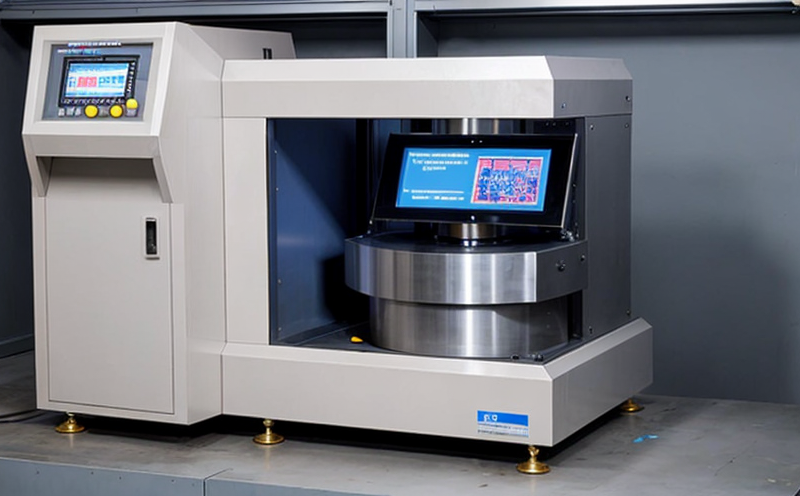ASTM E2544 Optical 3D Metrology System Testing
The ASTM E2544 standard outlines the use of optical 3D metrology systems in additive manufacturing (AM) to ensure dimensional accuracy and part quality. This service is crucial for ensuring that AM parts meet stringent design specifications, which can vary widely depending on the application—from aerospace components to dental implants.
Optical 3D metrology offers a non-contact method of measuring complex geometries with high precision, making it ideal for evaluating the accuracy and repeatability of AM processes. The testing process involves several key steps: specimen preparation, calibration of the 3D scanner, scanning the part, and analysis of the data against design specifications.
Specimen preparation is critical in ASTM E2544 optical 3D metrology testing. Materials must be selected based on their mechanical properties, thermal stability, and surface finish to ensure accurate measurements. The specimens are often produced using AM processes such as powder bed fusion or directed energy deposition. Once prepared, the specimens undergo a series of scans using an optical 3D metrology system.
The calibration process ensures that the scanner's readings align accurately with real-world dimensions. This is achieved by scanning known reference objects and comparing the results to the actual measurements. Calibration is essential for ensuring consistent and reliable data across multiple tests.
Scanning the part involves positioning the specimen in the scanner's field of view, adjusting the scan parameters, and executing the scan. The scan parameters include resolution, field-of-view, and scanning speed. These must be carefully chosen to balance accuracy with efficiency. After scanning, the data is analyzed using software that compares the scanned geometry against the design specifications.
The analysis involves several steps: extracting features from the scanned data, comparing them to the CAD model, and calculating deviations. The ASTM E2544 standard specifies acceptable tolerances for these deviations based on part type and application. For example, aerospace components may have tighter tolerances than consumer goods.
Once the analysis is complete, a detailed report is generated that includes scanned data, CAD model, deviation maps, and compliance with design specifications. This report serves as a critical tool for quality assurance and process improvement in AM operations.
| Parameter | Description |
|---|---|
| Resolution | The smallest feature that can be accurately measured by the scanner. |
| Field-of-view | The area within which the scanner can capture a complete image of the specimen. |
| Scanning Speed | The rate at which the scanner captures data, affecting both accuracy and efficiency. |
Understanding these parameters helps in optimizing the testing process for different AM applications. The service provider ensures that all tests are conducted according to ASTM E2544 standards, ensuring consistency and reliability across multiple projects.
Scope and Methodology
| Scope of Testing | Description |
|---|---|
| Part Preparation | The process of preparing the AM part for testing, including selecting appropriate materials and ensuring surface finish. |
| Calibration | The method used to ensure that the 3D scanner's readings are accurate and consistent. |
| Scanning | The act of capturing data from the AM part using an optical 3D metrology system. |
| Data Analysis | The process of comparing scanned data against design specifications to determine compliance. |
Methodology for ASTM E2544 testing involves a systematic approach to ensure that all aspects of the test are conducted according to international standards. This includes selecting appropriate materials, calibrating the scanner accurately, scanning the part under optimal conditions, and analyzing the data rigorously.
The methodology is designed to be flexible yet precise, allowing for adjustments based on specific project requirements while maintaining strict adherence to ASTM E2544 guidelines. The testing process begins with careful specimen preparation, moves through calibration and scanning, and concludes with comprehensive analysis and reporting.
International Acceptance and Recognition
The ASTM E2544 standard is widely recognized in the industry for its stringent requirements and rigorous testing protocols. It has been adopted by major manufacturers and research institutions worldwide, ensuring that AM parts meet high standards of quality and accuracy.
Countries like the United States, Germany, and Japan have embraced this standard as a critical tool for quality control and process improvement in additive manufacturing. The recognition of ASTM E2544 is further bolstered by its alignment with international standards such as ISO 9001 for quality management systems and ASME for pressure vessels.
By adhering to these standards, laboratories can ensure that their testing services meet the highest industry expectations. This not only enhances the credibility of the service provider but also fosters trust among clients and stakeholders.
Environmental and Sustainability Contributions
The ASTM E2544 standard plays a crucial role in promoting sustainability within additive manufacturing by ensuring that parts are manufactured with precision, reducing waste, and optimizing material usage. By adhering to these standards, manufacturers can minimize environmental impact while maintaining high product quality.
Optical 3D metrology testing helps identify areas where process improvements can be made to reduce material consumption and energy use. For example, by ensuring that parts are manufactured within specified tolerances, excess material can be minimized, leading to cost savings and reduced waste.
The standard also promotes the development of more efficient AM processes, which in turn reduces the overall environmental footprint of manufacturing operations. By adhering to ASTM E2544 guidelines, laboratories contribute to a more sustainable future by ensuring that additive manufacturing practices are both precise and environmentally responsible.





